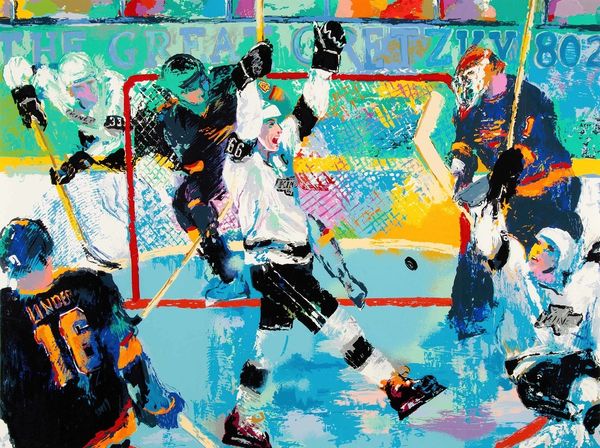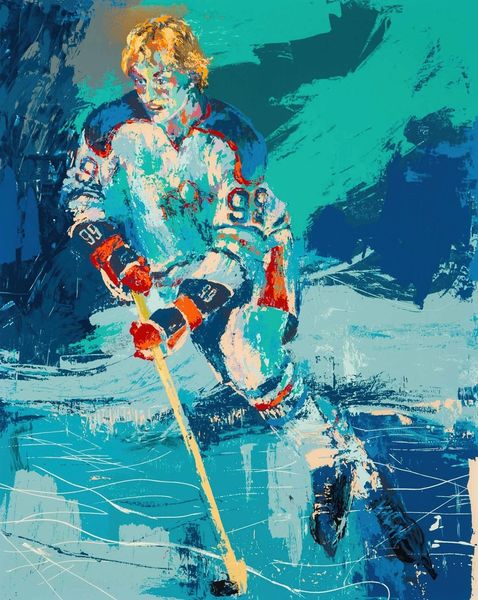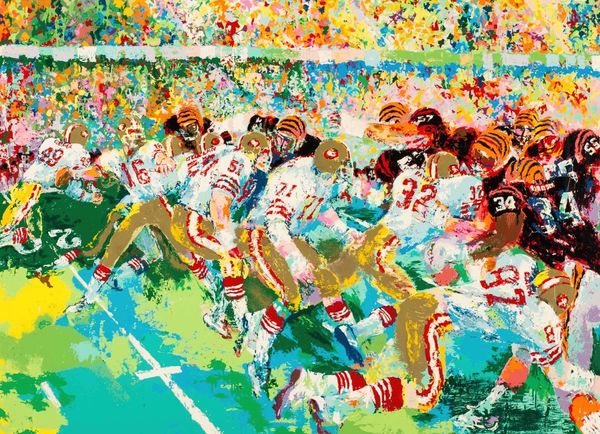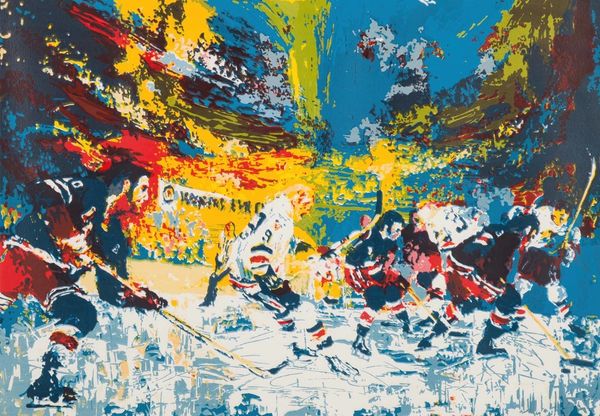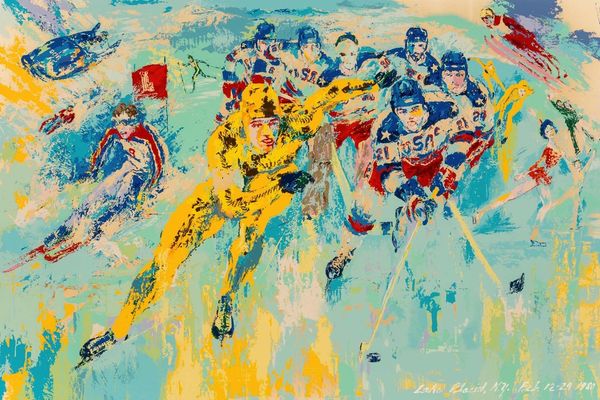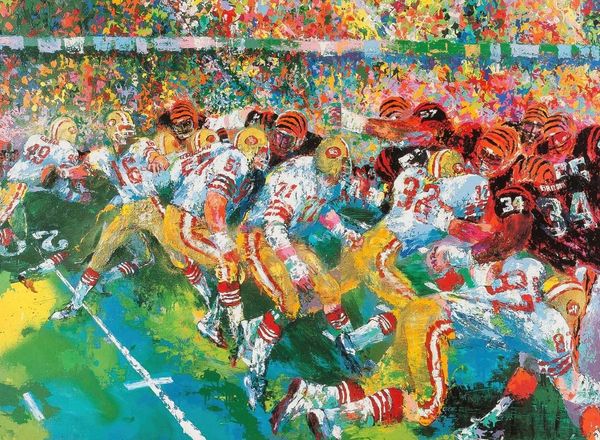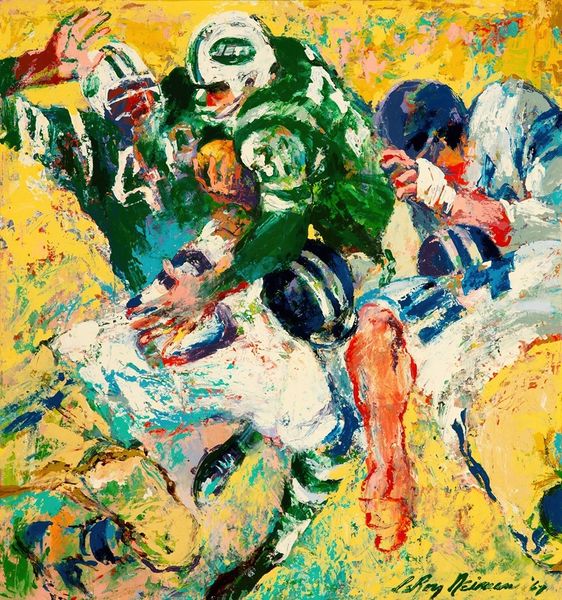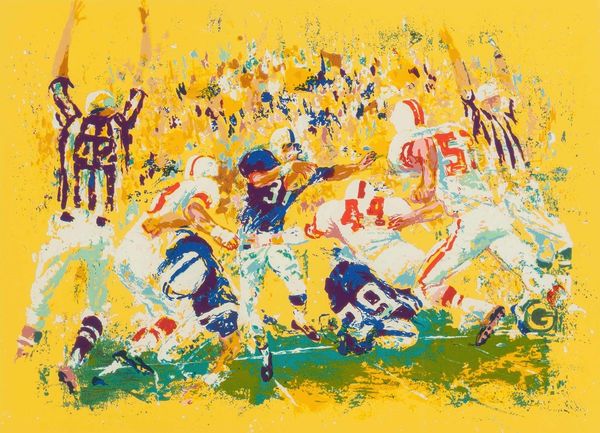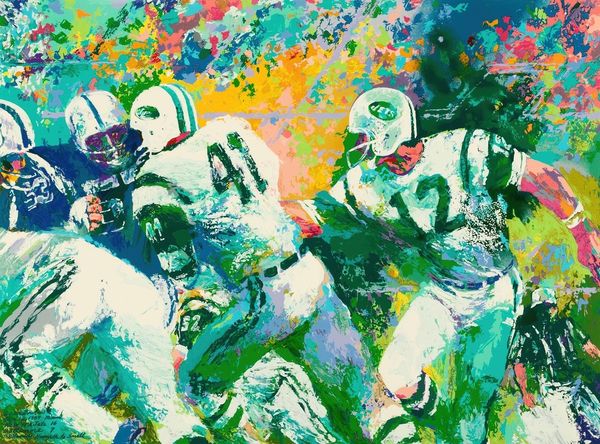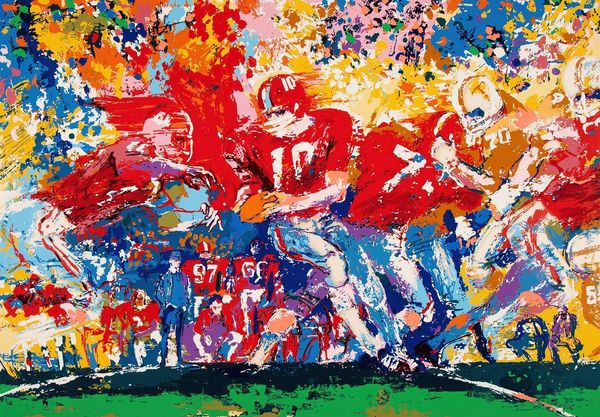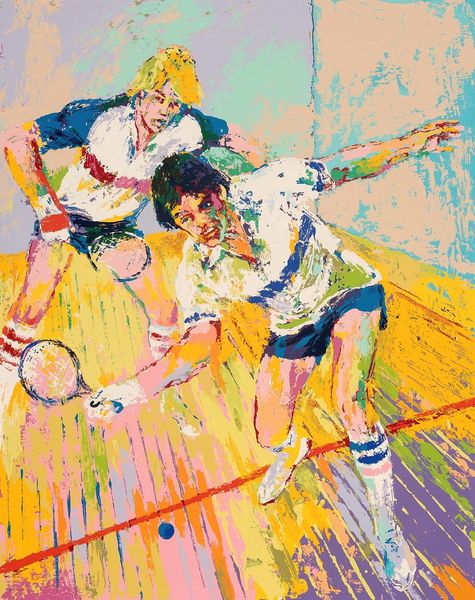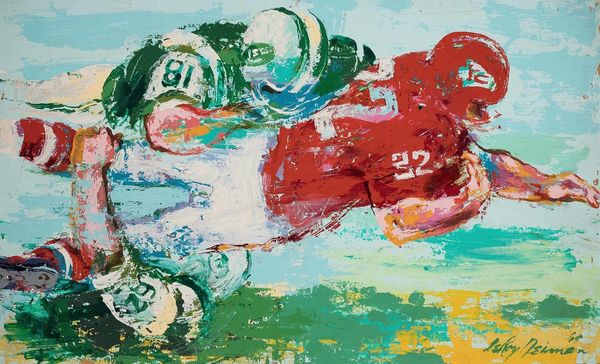
Copyright: Modern Artists: Artvee
Editor: Here we have LeRoy Neiman's "The Blues and the Bruins," painted in 1968 using acrylics. There’s such intense energy; it really captures the frenetic motion of a hockey game. How do you interpret the cultural significance of this work, given its portrayal of a very physical and arguably masculine sport? Curator: Neiman's work presents an interesting lens through which to examine how gender, class, and race intersect within the spectacle of sport. Considering its roots in a tumultuous decade, rife with social upheaval, to what extent does this painting glorify athletic competition while subtly reflecting underlying social tensions? Think about the representation of predominantly white male athletes in contrast to, say, artistic portrayals of the Civil Rights movement from the same era. Editor: That's a powerful point. I hadn’t considered the whiteness so explicitly. The expressionistic style almost obscures individual identities, but the team colors definitely establish sides. Does the abstraction contribute to a broader commentary about the hyper-masculine culture surrounding hockey? Curator: Precisely. Neiman uses the aesthetics of Expressionism to, in some ways, mimic the chaos and violence of the game itself. How might we unpack the politics of representation at play, specifically in relation to ideas about dominant culture, national identity, and even Cold War tensions? Sports, after all, have often been arenas for symbolic conflict. Editor: So, the painting becomes a sort of snapshot of American ideals and tensions in the late '60s. The visual energy distracts from its cultural implications. Curator: Exactly! And recognizing this work’s deeper contexts provides an enriching viewing experience. We must consider artwork’s power in reflecting – and potentially reinforcing – societal norms and biases. Editor: Thank you! Now, I see Neiman’s painting as something more complex and less celebratory, highlighting social power and potential disparities that weren't immediately obvious.
Comments
No comments
Be the first to comment and join the conversation on the ultimate creative platform.

